
email us
ted@chattanoogaroofingco.com

call us now
(423) 308-ROOF
Roof Inspection

11 Apr. 2024
How to Clean Your Roof Safely
A clean roof is essential for maintaining your home’s structural integrity and aesthetic appeal. Neglecting your roof can lead to the growth of harmful algae, moss, and lichen, which can damage your roofing materials and shorten their lifespan. In this guide, we will tell you how to clean your roof safely with a step-by-step guide to cleaning your roof safely and effectively, including the tools and materials you will need and the best practices for each cleaning method.
While some homeowners may choose to clean their roofs themselves, it is important to note that roof cleaning can be dangerous and time-consuming. If you are in the Chattanooga area, consider reaching out to a professional roof cleaning service.
How to Clean Your Roof Safely: A Step-by-Step Guide
Step 1: Safety First
Personal Protective Equipment
Before you climb onto your roof, it is essential to ensure you have the right safety gear. This includes non-slip shoes with good traction to prevent accidents, durable gloves to protect your hands from sharp edges or chemicals, and safety goggles to shield your eyes from potential harm.
Securing the Ladder
Using a sturdy ladder is important for safe roof access. Ensure the ladder is on solid, level ground and extends at least three feet over the roof edge for stability. Secure the ladder at the top and bottom to prevent slipping, and consider using a ladder stabilizer for additional safety.
Roof Safety Tips
When on the roof, always be mindful of your surroundings. Keep clear of power lines, tree branches, and other hazards. Move slowly and deliberately to maintain your balance, avoiding any wet or damaged areas of the roof.
Step 2: Preparing Your Roof for Cleaning
Inspection
Begin by carefully inspecting your roof for any signs of damage, such as cracked, loose, or missing shingles. Look for any moss, algae, or piles of leaves that can trap moisture against the roof, causing decay.
Clearing Gutters & Downspouts
Ensure your gutters and downspouts are free of leaves, twigs, and other debris. This not only prevents water damage by allowing rainwater to flow off your roof properly but also makes the cleaning process more effective.
Step 3: Choosing the Right Cleaning Solution
Eco-friendly Options
Opt for eco-friendly cleaning solutions that effectively remove dirt and grime without harming your roof or the environment. These solutions are typically made from natural ingredients and are designed to be gentle on your roofing material while being tough on stains.
Chemical Cleaners
Chemical-based cleaners may be necessary for more stubborn stains, such as heavy moss or algae build-up. To prevent damage, choose a cleaner specifically designed for your type of roof. Follow all manufacturer instructions to ensure you’re using the product safely and effectively.
Step 4: Cleaning the Roof
The Low-pressure Washing Technique
Using a low-pressure washer, apply your chosen cleaning solution in sections across the roof. Low pressure is essential to avoid lifting or damaging shingles. Allow the cleaner to sit for the recommended duration before gently rinsing it off with water.
Spot Cleaning Stains
For persistent stains, use a soft brush or sponge with a mild, roof-safe cleaner. Gently apply the cleaner to the affected areas and lightly scrub to remove the stain. Avoid using harsh scrubbing motions, which can remove granules from the surface of shingles.
Step 5: Post-Cleaning
Inspecting Your Work
After cleaning, take another thorough walkover of your roof to ensure all areas are clean and intact. This is also a good time to check for any accidental damage or areas that might have been missed during the initial cleaning.
Maintaining Your Roof Post-Cleaning
Keep your roof in top condition by regularly checking for and clearing away leaves, branches, and other debris. Inspect your roof after severe weather and address any issues promptly to avoid more significant problems later.
Conclusion
Safety is paramount when cleaning your roof. Always use appropriate safety gear and precautions. Choose the right cleaning solutions based on your roof type and the nature of the stains. Regular maintenance and inspections post-cleaning can greatly extend the lifespan of your roof. Remember, a clean roof is a lasting roof!
If you discover damage during the process, do not hesitate to contact Chattanooga Roofing Company. We can repair the damage to ensure that your roof remains in top condition, safeguarding your home and enhancing its appearance.
- By: chattroof
- Roof cleaning best practices, Avoiding hazards when cleaning your roof, Roof cleaning tips, How to clean your roof securely, Safe roof maintenance, Safety precautions for roof cleaning, Cleaning your roof without risk, Roof cleaning safety protocols, Roof care precautions, Minimizing risks in roof cleaning., Safely wash your roof, Roof cleaning safety guidelines, Methods for safe roof cleaning, Protecting yourself while cleaning your roof, Safest ways to clean your roof, Roof maintenance without danger, Roof cleaning safety measures, Tips for safely washing your roof, Ensuring safety in roof cleaning, Safeguarding your health while cleaning the roof

29 Dec. 2023
How Does a Roof Inspection Work?
Maintaining a home’s value and comfort can sometimes feel like navigating through a complex maze. But imagine having people that can help you keep your roof in top shape. That is where roof inspections from Chattanooga Roofing Company come in. But, how does a roof inspection work? These offer homeowners peace of mind when it comes to taking care of their roofs. From detecting problems to preventing disasters, these inspections serve multiple purposes. So, let’s explore the process of how roof inspections work.
How Does a Roof Inspection Work? 10 Steps for Each Roof Inspection
1. Scheduling the Inspection
The first step in a roof inspection is scheduling the service. Homeowners typically arrange inspections after severe weather and before buying or selling a property. This is also done as part of regular home maintenance every 2-3 years.
2. Initial Consultation
Before the inspection, the inspector may discuss any concerns or issues the homeowner has noticed. This helps in focusing on potential problem areas during the inspection.
3. Visual Check-up From the Ground
The inspector begins with a ground-level visual check-up. They look for signs of roof damage, such as missing shingles. But there is more; they also look for visible wear and tear or debris that could indicate underlying issues.
4. Checking Roof Surface
The inspector then checks the roof surface. This involves checking shingles, tiles, or other roofing materials. They do it to find signs of damage, aging, or improper installation.
5. Structural Integrity Check
A key part of the inspection is checking the roof’s structure. The inspector checks for sagging and uneven roof planes.
6. Interior Inspection
The inspection also includes checking the interior of the house, especially the attic. The inspector looks for signs of water intrusion, mold, and mildew. Another key detail the inspector pays attention to is proper insulation and ventilation.
7. Gutter and Downspout Evaluation
Gutters and downspouts are important for proper water drainage. The inspector makes sure that they are free of debris and doing their job.
8. Additional Components Check
Depending on the roof type and house structure, the inspector may also check skylights, chimneys, vents, and flashing. This helps the inspector look for any signs of damage or leaks.
9. Detailed Reporting
After the inspection, the inspector provides a detailed report. This report outlines the condition of the roof, any issues found, and recommendations for repairs or maintenance.
10. Follow-up Consultation
After the inspection, a follow-up consultation takes place. In this, the inspector discusses the findings in detail. During this session, the inspector elaborates on any issues detected. They also explain their potential impact and urgency.
They also provide guidance on repair options, estimated costs, and maintenance tips to prolong the roof’s lifespan. This consultation is an opportunity for homeowners to ask questions and clarify doubts. It helps make sure that they fully understand the condition of their roof.
Additionally, the inspector can offer insights into preventative measures and best practices for roof care. This helps homeowners plan future maintenance and budgeting effectively.
Conclusion
A thorough roof inspection is essential for maintaining the health and longevity of your roof. Understanding this process helps homeowners appreciate the importance of regular inspections.
Plus, it helps them make informed decisions about their roof’s maintenance. Regular inspections can prevent minor issues from becoming major problems. Ultimately, this can save time and money. Contact us today to schedule your inspection!
- By: chattroof
- Roof diagnosis, Roofing inspection, roof inspection service, House roof inspection, professional roof inspection, Residential roof inspection, commercial roof inspection, Property roof inspection, Roof examination, Home roof inspection., Roof survey, Roof assessment, Roof evaluation, Roof scrutiny, Roof appraisal, Roof check-up, Roof analysis, Roof review, Roof overview, Roof check
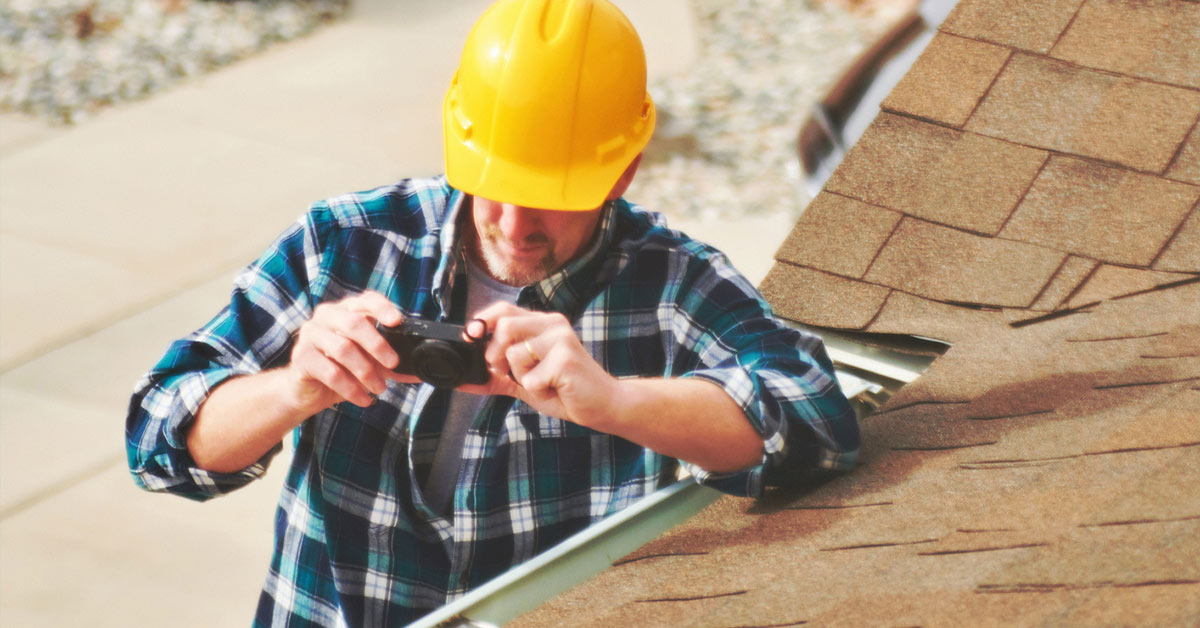
25 Sep. 2023
Why You Need a Professional Roof Inspection After a Storm
Why You Need a Professional Roof Inspection After a Storm
After a storm passes, we often sigh in relief, grateful for our shelter. However, your roof that protected you might have taken quite a beating. Just like we check our windows and doors, ensuring our roof’s integrity is equally crucial. Many unseen damages, from missing shingles to cracks, can lead to bigger problems if left unchecked. However, you may not see the damage – which is why you need a professional roof inspection.
These issues might not be immediately visible, and that’s where professionals come in. They spot the subtle signs of wear and damage that could become costly repairs in the future. So, while the storm may have passed, ensuring your metal roof remains in top shape is essential, making a professional inspection indispensable.
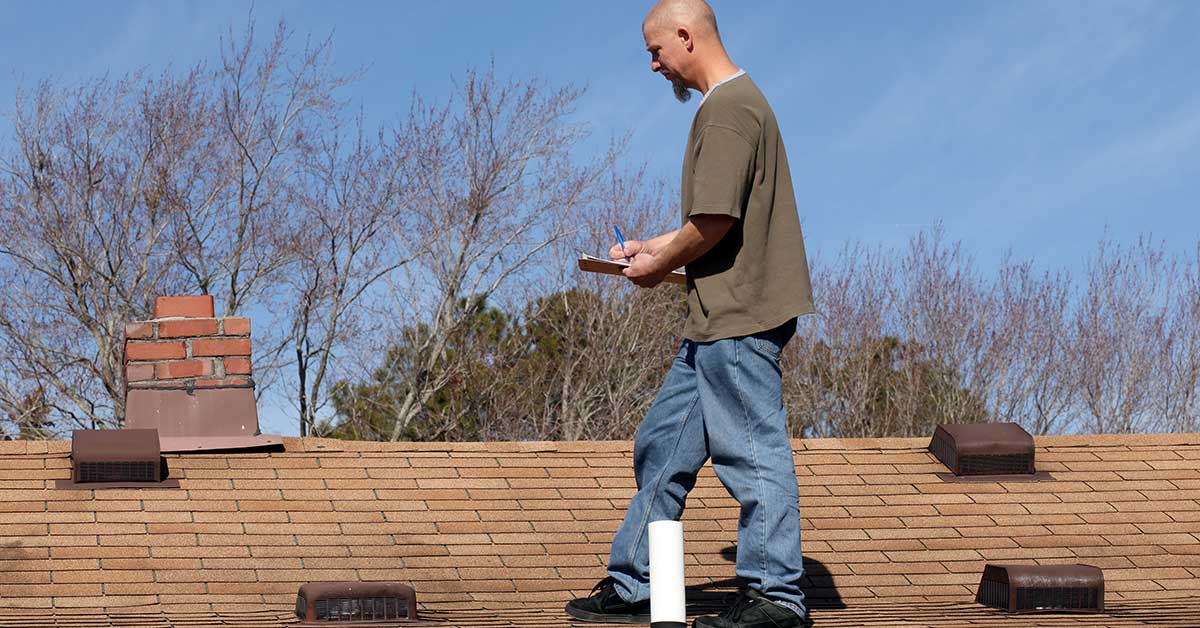
Roof Inspection
The Impact of Storms on Your Roof
1. Wind Damage
Strong winds during a storm can cause significant damage to your roof. They can lift shingles, loosen flashing, or even tear off entire sections. So, while some damage may be visible from the ground, much goes unnoticed without a thorough inspection.
2. Hail Damage
Hailstorms can be particularly harmful to roofs. Hailstones can puncture shingles, creating openings for water to seep through. Over time, this can lead to leaks and water damage inside your home.
3. Water Damage
Heavy rain during a storm can expose weaknesses in your roof’s structure. Water can find its way through small cracks or gaps, leading to leaks that may not be immediately apparent. Thus, this hidden damage can worsen, causing mold, rot, and structural issues.
The Importance of Timely Roof Inspections
1. Identifying Hidden Damage
One of the key reasons you need a professional roof inspection after a storm is to uncover hidden damage. So, while you might spot some apparent issues from the ground, an experienced roofer can assess the entire roof’s condition.
2. Preventing Costly Repairs
Addressing storm-related roof damage can prevent costly roof repairs down the road. If you ignore minor issues, they can escalate into major problems that require extensive repairs or even a full roof replacement. Thus, a professional inspection can catch these issues and save you money in the long term.

Roof Inspection
Benefits of a Professional Inspection
Here are some benefits of choosing professional roofers like Chattanooga Roofing Company:
- Safety: Professionals have the necessary safety equipment and experience to work safely on your roof.
- Expertise: They know what to look for and can identify even the most subtle signs of damage.
- Thoroughness: Professional inspections are comprehensive, ensuring no damage goes unnoticed.
Conclusion
In conclusion, the importance of a professional roof inspection after a storm cannot be overstated. Storm damage, whether visible or hidden, can lead to costly repairs and compromise your home’s safety. By addressing issues promptly through a professional inspection, you can save time and money in the long run.
Chattanooga Roofing Company
https://www.google.com/maps?cid=3134983317498625437
https://www.google.com/maps?cid=3134983317498625437
(423) 443-4174
- By: chattroof
- cost of roof inspection, prices of roof inspection, roof inspection, roof inspection rates, roof inspection near me, roof inspection cost, roof inspection nearby, roof inspection prices, roof inspection services, roof inspection service, roof inspection company, best roof inspection, best roof inspection service, best roof inspection services, best roof inspection company, local roof inspection, professional roof inspection, commercial roof inspection, rates of roof inspection
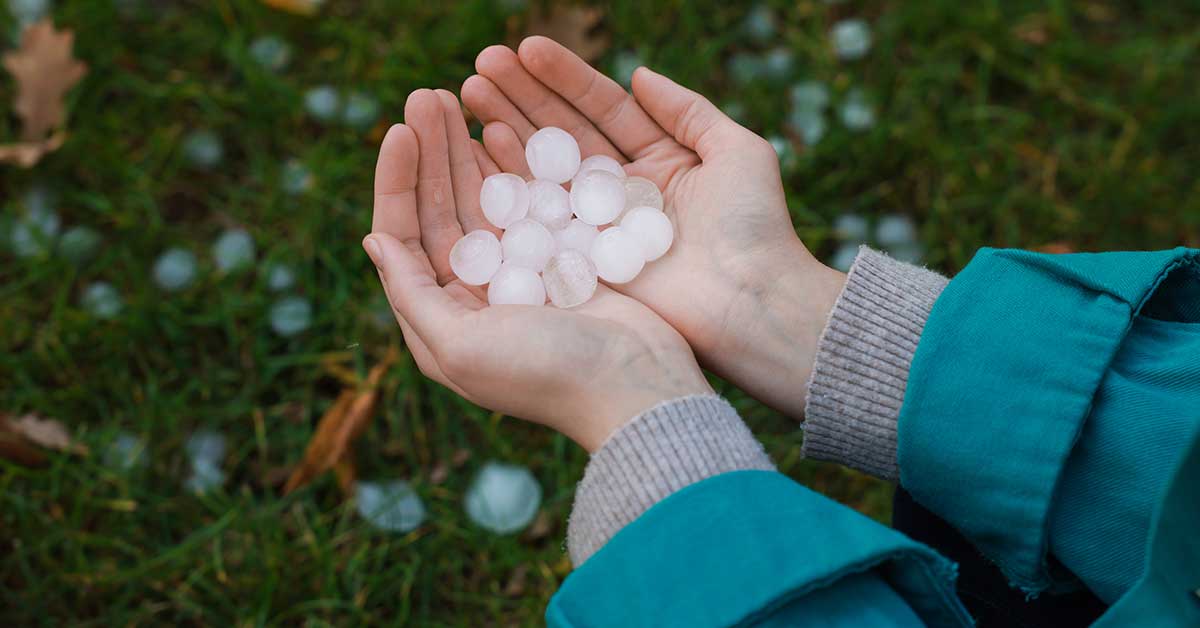
27 Feb. 2023
What Kind of Hail Will Damage an Asphalt Shingle Roof?
The roof is an essential component of any building. Besides protecting from harsh weather conditions, your roof keeps the structure safe and secure. However, when severe weather strikes, your roof can receive significant damage, and hail is one of the most damaging elements. Additionally, asphalt shingle roofing is particularly vulnerable to hail damage. The shingles can be easily cracked or even torn off, leaving the underlying structure exposed. In this blog, we will explore the different types of hail damage that can occur on an asphalt shingle roof. So, what kind of hail will damage an asphalt shingle roof? Let’s dive in.
First, What Kind of Hail Will Damage an Asphalt Shingle Roof?
Let’s get the short answer out of the way right away. Hail that’s a half-inch in diameter may be reason to call a professional roofer for an inspection – especially if strong wind is involved. However, if the hail is closer to an inch in diameter, count on damage and plan for repair work.
Damage that Hail Does to an Asphalt Shingle Roof
1. Bruising
Hail can cause dents or bruises on an asphalt shingle roof, leading to a loss of granules from the shingle surface. This can result in weakened shingles, which are more susceptible to damage from further hailstorms or other extreme weather conditions.
2. Cracking
Hail can also cause cracks in asphalt shingles, leading to leaks and other water damage. Even small cracks can allow water to penetrate the shingle. This can lead to damage to the underlying structure of the roof.
3. Puncturing
Larger hailstones can puncture through the surface of asphalt shingles, leaving holes that allow water to seep into the roof. This can result in significant damage to the underlying structure of the roof, as well as damage to the interior of the building.
4. Granule Loss
Asphalt shingles are coated with small granules that protect the shingle from UV rays and other environmental factors. Hail can dislodge granules from the shingle surface. As a result, this can weaken the shingle and leave it vulnerable to further damage.
5. Shingle Displacement
Hail can also cause asphalt shingles to become displaced from the roof, exposing the underlying structure to the elements. This can result in water damage to the roof and interior of the building, as well as potentially compromising the roof’s structural integrity.
Conclusion
In conclusion, hail can cause significant damage to asphalt shingle roofs, including bruising, cracking, puncturing, granule loss, and shingle displacement. If you suspect that your roof has been damaged by hail, it is important to have it inspected by a professional as soon as possible. Timely repairs can help prevent further damage and extend the life of your roof. Therefore, homeowners must invest in high-quality roofing materials that withstand severe weather conditions, including hail. By taking proactive steps to protect your roof, you can help ensure the safety and security of your home or business, even in the face of extreme weather.
For a complete hail damage inspection of your roof, call Chattanooga Roofing Co. today. We’ll be glad to help!
- By: chattroof
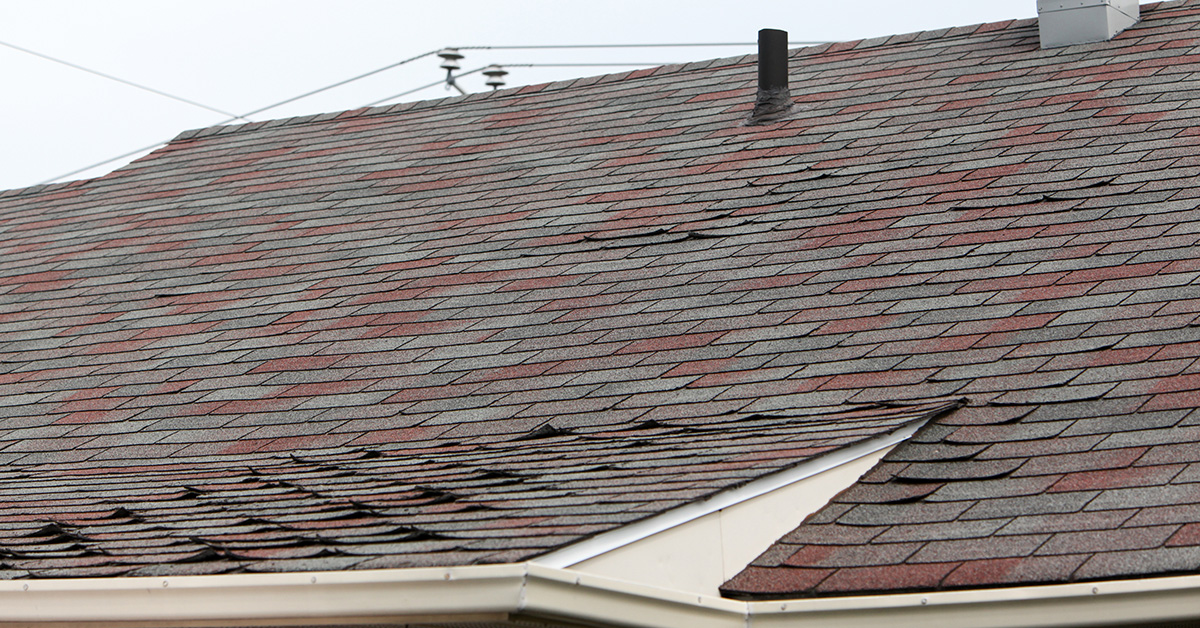
30 Jan. 2023
Benefits of a Professional Roof Inspection to Assess Storm Damage
Protecting yourself from a storm begins with a solid roof. While your roof is generally excellent at keeping you safe from the elements, it can be severely damaged by a severe storm. Worse yet, you won’t be able to see much of the roof damage from the ground. However, a professional roof inspection can help find and assess storm damage. Moreover, your contractor can respond swiftly and effectively to any repair or replacement needs. Keep reading to discover some of the benefits of a professional roof inspection to assess storm damage.
Key Benefits of a Professional Roof Inspection
1. Monitor Roof Stability
The first thing your roofer does is check the roof’s stability. But what does that mean? This means a roofer inspects the condition of the rafters, joists, bracing, and any connecting hardware. Extreme weather conditions like heavy rain, snow, or hail can be violent. For that reason, an inspection is especially crucial right after a big storm has passed.
2. Check for Leaks
A leaky roof is one of the worst problems and is every homeowner’s worst nightmare. Leaks in the roof may go undetected until a severe storm blows through and water begins to drip through your ceiling. The presence of discoloration, such as brown stains on the walls or ceiling, is an indication of water damage. Regular expert roof inspections are the best way to avoid this. Having your roof inspected regularly will boost your chances of spotting leaks before they cause major damage.
3. Spot Unseen Issues
When a storm passes through, it can be tempting to climb up on a ladder and have a look at your roof for damage. This is not a bad idea if you feel safe doing so. While this is useful for spotting large, apparent problems, it often misses the smaller, less evident problems that cost the most. When you hire a skilled roofer, they can spot even the smallest issues and offer solutions. It’s possible for the inexperienced eye to miss problems like small leaks, broken shingles, and missing flashing. However, a professional inspector won’t let that happen.
4. Review Shingles
Have you got a lovely shingle roof? Asphalt shingles are a popular roofing material due to their low cost and high durability. However, they are not indestructible. A professional roofer can check the condition of your roof and shingles to ensure they are still holding up. Storms can cause shingles to become loose, damaged, or even come off entirely. It’s important to make sure the shingles are fitted correctly so there are no leaks in the roof later on.
By now, we’re sure you’re aware of the benefits of a professional roof inspection – especially by a qualified inspector. For a complete, all-points inspection of your roof, call Chattanooga Roofing Co. today. We’ll be glad to help!
- By: chattroof

28 Nov. 2022
How to Inspect Your Own Roof
Roofing work, including maintenance and replacement, is a major expense for home and business owners alike. When there are no visible leaks or cracks, most people will think that a roof is in good condition. However, when most people notice a roof leak, significant structural damage has already occurred. Instead of delaying maintenance, you should schedule routine upkeep to protect a costly asset. Admittedly, roofs are what keep the elements out of your house or business. Therefore, it is important to know how to inspect your own roof from time to time. Here is how you can do that:
How to Inspect Your Own Roof in a Few Simple Steps
As a homeowner, you should know how to examine your roof. Always begin with a stroll around the building’s perimeter. Look for cracks and separation within the roof that may show damage. More subtle problems may take longer to show themselves than more obvious damage.
Nonetheless, following a storm or other natural disaster, it may be helpful to take a trip around your home to assess the subtle changes to your roof.
Roof inspections should take place both inside and outside. Here are some pointers on conducting an interior roof inspection.
Possible Interior Leak Warning Signs
- Diminished light reflectivity in the ceiling
- Paint or wallpaper that is peeling
- Cold, damp patches near fireplaces
- Discoloration where walls meet the ceiling
- Dripping from ceiling to floor
Possible External Leak Warning Signs
- Damaged or missing shingles might be an external indicator of a roof leak. Curling, cracking, and losing their watertight integrity are all signs of age in shingles.
- The flashing around the roof’s perimeter can fail and cause leaks if it is rusted or missing.
Look for signs of rot or damage in the gutters, downspouts, including splash pans. By making timely leak repairs, you can reduce maintenance costs and ensure roof stability. Leaks, if not repaired, can result in costly structural damage and a host of additional problems, including but not limited to electrical malfunctions, mold growth, and plumbing malfunctions.
Here are Some Other Factors That Can Help You Inspect Your Roof in Detail
- Locate and clear moss, algae, and leaf piles. They are the most likely culprits for water leaks as well as damage.
- Always be on the lookout for shingles that have buckled or curled. As a result of the heat in the attic, shingles typically buckle and curve away from the house, leaving the roof and the house vulnerable to weather damage and inadequate wind resistance.
- The most common effect of roof damage is worn-out or missing shingles.
- Make sure there is no granule loss. If you notice granules falling off your shingles in large amounts, it’s a sign that they’re getting old or have been damaged by bad weather and will no longer safeguard your home from water damage.
- Check the attic of your roofing for signs of rotting wood and water damage, including deteriorated trusses.
If you cannot do a roof inspection on your own or if you have found damage to your roof, you should call the professionals at Chattanooga Roofing Company to get immediate help because fixing your roof is crucial before the winter arrives.
- By: chattroof
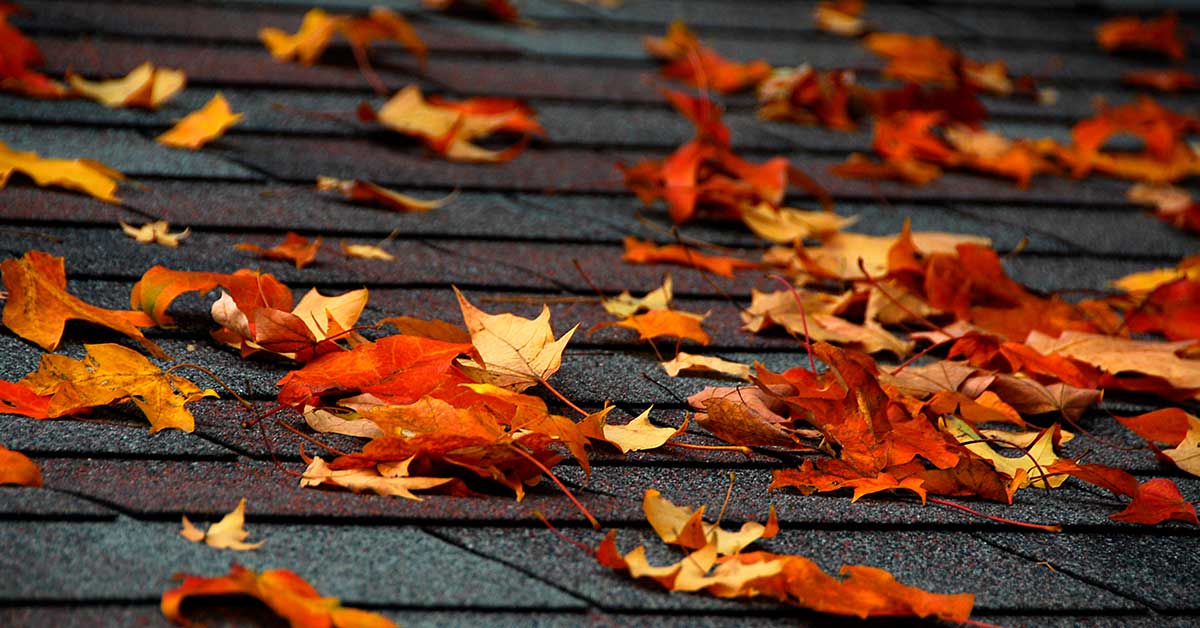
26 Oct. 2021
Is Fall a Good Time to Inspect Your Roof?
Is fall a good time to inspect your roof? Well, you should have your home’s roof inspected once a year at the very least. Inspecting the roof with a trained eye can detect and pinpoint areas that are failing or about to fail. This prevents leaks that could lead to mold and structural damage – and can save you thousands of dollars.
So, why fall? Fall weather tends to be cooler but yet without as much rain as spring. For that reason, it’s actually the best time of year to check your roof. The fact that your roof is intact and not damaged as the seasons change gives you confidence as the winter approaches.
Why Is Fall A Good Time to Inspect Your Roof?
The following are two compelling reasons to have your roof inspected in the fall:
1. Prevent Mold Damage
You can catch small issues before they become major ones. Roof inspection on an annual basis is the best way to do this. If you have a leak in your attic during the rainy season, the wood will rot, and mold will grow. Mold abatement services or having to remove rotting wood from your attic are far more expensive than the money you would have spent on a new roof. Catching and fixing small issues will save you a lot of time, money, and frustration in the long run.
2. Refuge for Furry Friends
As the cool autumn weather gives way to the harsh winter, the animals in your backyard will start looking for new places to call home. What better place for a raccoon, possum, or squirrel to live than in your attic – through a small crack in your roof?
Small animals can quickly damage roof shingles and create an opening that can serve as an entryway. The front teeth of small mammals are razor-sharp. Squirrels will benefit from any damage to your roof because they can tell where the heat is coming from.
So, is fall a good time to inspect your roof? You bet! If it’s been a while since you had your roof inspected, or if it’s time for your annual inspection, now is the time to schedule an appointment to have your roof inspected. Call Chattanooga Roofing Co. at (423) 401-2448 for your roofing needs.
- By: chattroof
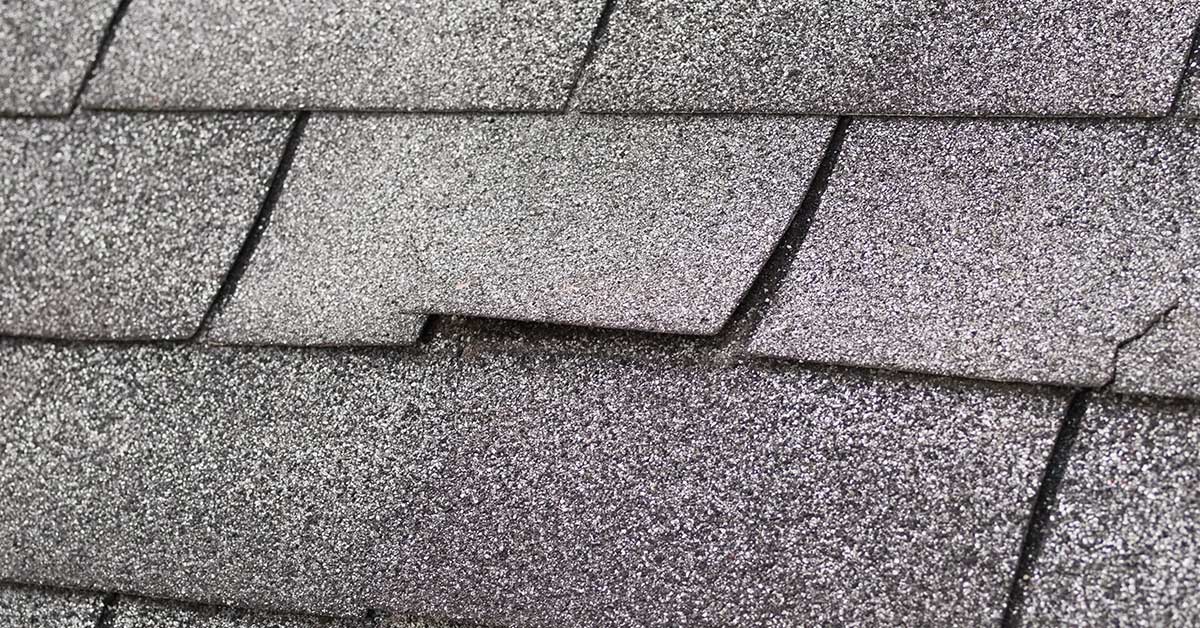
28 Jun. 2021
Why is a Leaky Roof Dangerous?
Do you see water stains coming from your attic that extend across your ceilings and run down on your walls? These are obviously major signs that you have a leaky roof. It is imperative that you have your roof inspected and these leaks repaired immediately. But, why is a leaky roof dangerous?
Even if it does not bother you too much or if you’re already planning a home renovation down the road, a small leak can lead to bigger problems if left untreated. It could lead to rotted framing and wall materials, as well as damaged insulation and ceilings.
Here are the signs of a leaky roof that you should watch out for:
- Dark spots
- Sunlight streaks
- Warped shingles
- Clogged gutters
- Mold growth
- Loosened chimneys/vents
- Higher energy bills
That should answer the question, “why is a leaky roof dangerous?” If you notice any of these signs, hire a roofing contractor to diagnose then fix the issue. If the leaks are big, don’t try to fix it on your own. There’s only so much you can do to manage the situation, and a professional roofing expert can have the leak repaired more quickly than you do.
How Do You Prevent a Leaky Roof?
To prevent leaks from happening, you should have your roof inspected at least twice a year, preferably before the start of heating and cooling seasons (fall and spring).
Doing this will ensure that your roof stays in good shape. It will help you get small problems addressed quickly, and prevent potential big problems from happening.
Repair Your Roof Leak Today
Leaky roofs never fix themselves, nor do they get better on their own. Postponing the repair work for later will only make the problem worse, the labor more intensive, and the repair more expensive.
A roof leak can cause a huge inconvenience to your household. If you are in need of leak repair, please call Chattanooga Roofing Co. at (423) 888-0258 for more information.
- By: chattroof
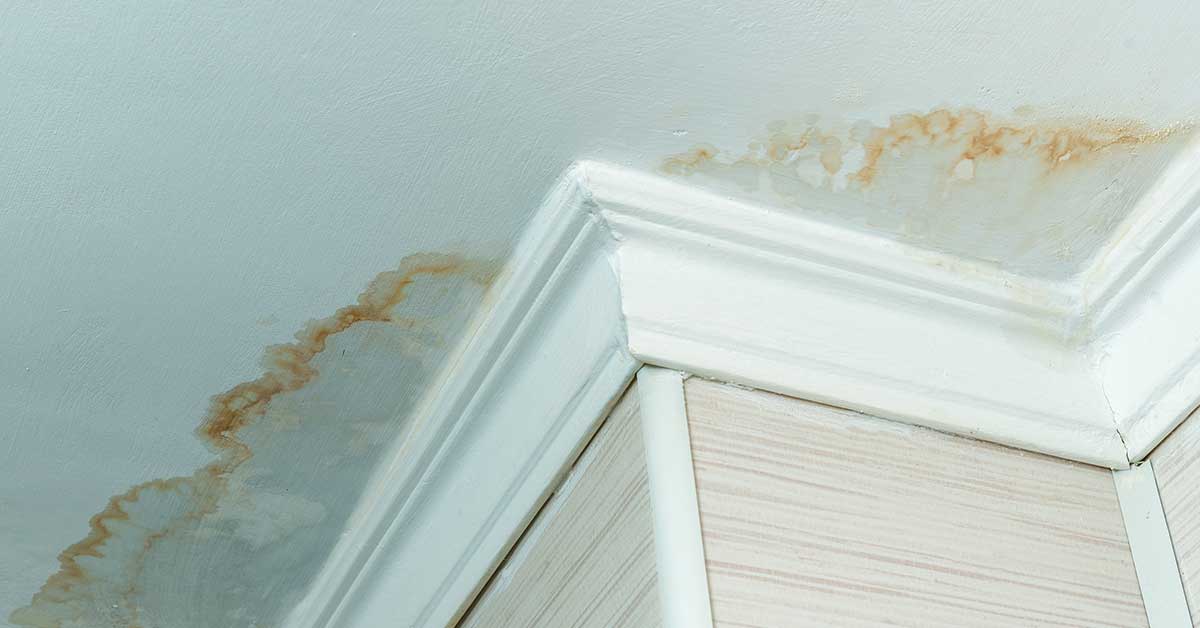
26 May. 2021
5 Signs Your Roof is Damaged
When was the last time you inspected your roof for damage? If you don’t know the last time, or worse, you haven’t inspected it at all, this spring would be a good time to do so. We will describe the 5 signs your roof is damaged.
Keep on reading to find out if your roof has damage – and if you’ll need the help of a roofing contractor.
5 Signs Your Roof is Damaged
Water stains
If you see stains running along the ceiling and walls of your house, you need to have your roof checked. If left untreated, these small stains could lead to bigger problems over time such as rotting framing, destroyed insulation, and weaker foundation structure.
Damaged shingles
After checking for stains and leaks, go outside and check the shingles on your roof. Are all of them still lying flat on the roof? Have you noticed some shingles that appear cracked, loose, or maybe missing? Have you seen some asphalt granules on your downspouts? If so, you’ll need the help of a professional to replace these shingles.
Damaged flashing
Roof flashing is a piece of metal that protects the area around chimneys, vents, and skylight windows. It redirects water away and prevents moisture from growing in these structures. Check your flashing for cracks or corrosion. If it has been damaged, you’ll need to have it replaced with one that is made of sturdier materials.
Presence of mold
Rainy weather and humid days can cause algae, moss, and lichens to grow exponentially in your roof. These can also create health problems for the family, attract pests, and make your roof unsightly. In addition, ask a roofing expert to come over and clean the roof as soon as possible to minimize the damage and staining.
Presence of pests
If there are rodents in the attic, there could be a gaping hole in the roof that allows these pests to enter. Lay out animal traps to find out their entry and exit points, then seal them. If the infestation is extensive, you’ll need the help of a pest control company.
If you suspect your roof has damage call Chattanooga Roofing Co. at (423) 443-4174.
- By: chattroof
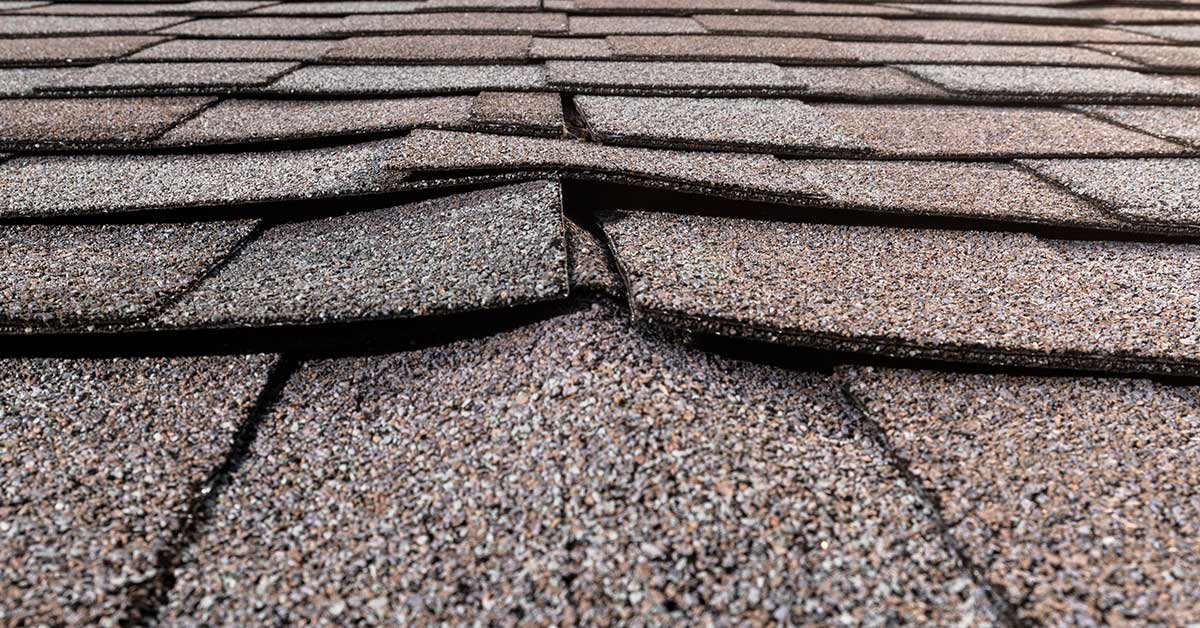
21 Jan. 2021
What are the Problem Areas of Your Roof?
If your roof is getting on in age or has not been maintained for quite a while, we recommended that you inspect it for damage. Doing so prevents the problem from worsening and saves you from spending lots of $$ in repair. But in order to do so, you have to know what are the problem areas of your roof.
What are the Problem Areas of Your Roof?
Here are the top 4 areas you need to watch.
1. Fascia and Soffit
The fascia is a piece of trim that runs along the edge of a roof to create a more smooth, polished appearance and to protect the edge from the weather elements.
A soffit is placed underneath the eaves to keep moisture away from the rafters.
Both of these could be potential problem areas so inspect them regularly and look for holes and cracks where moisture and pests can come through.
2. Flashing
Roof flashing is made of galvanized steel and helps seal your roofing system by directing water away from critical areas of the roof such as chimneys, vents, and skylights.
However, it could get torn down by a strong wind or get oxidized in the long run. Damaged flashing can cause moisture to come inside the roof seams and cause water leaks.
3. Gutter
A gutter collects rainwater down through a downspout and diverts it away from a home’s foundation. If you don’t maintain it well, your gutter could clog. Leaves, twigs, and other debris can all contribute to that clog. If the load becomes too heavy, the gutter could pull away and separate from the rest of your home.
4. Shingles
Shingles make your roof easy on the eyes. They also serve as another protective layer for the underlayment and other parts of your roofing system. However, high winds can pry these shingles apart and extremely hot weather may cause them to curl or loosen up.
If you spot any damage within these areas, make sure to call a roofing contractor so they can be fixed right away. Chattanooga Roofing Company is here to answer any questions at (423) 888-0258.
- By: chattroof
- 1
- 2
visit Us: 529 S. Germantown Rd. Chattanooga, TN 37411
email us: ted@chattanoogaroofingco.com
24/7 Emergency call (423) 308-ROOF

